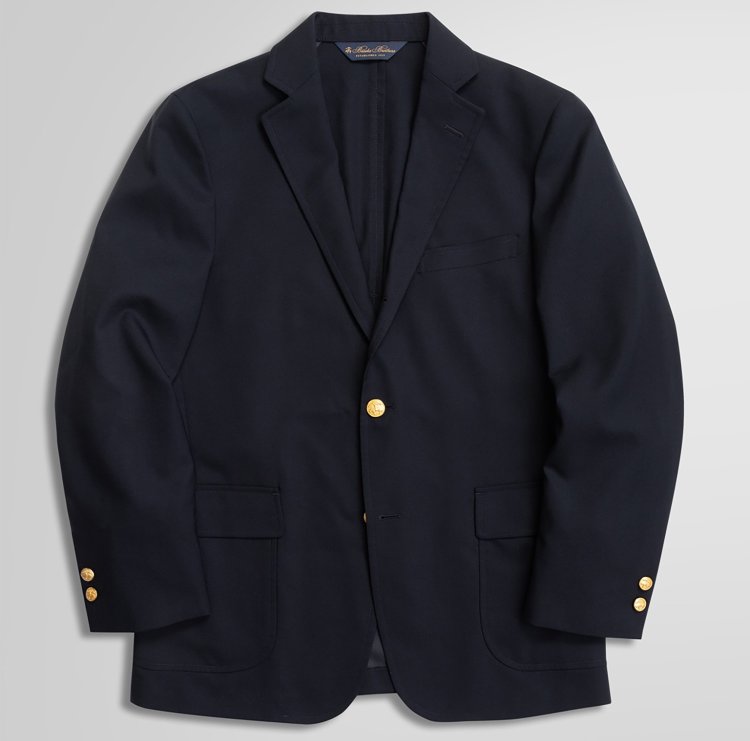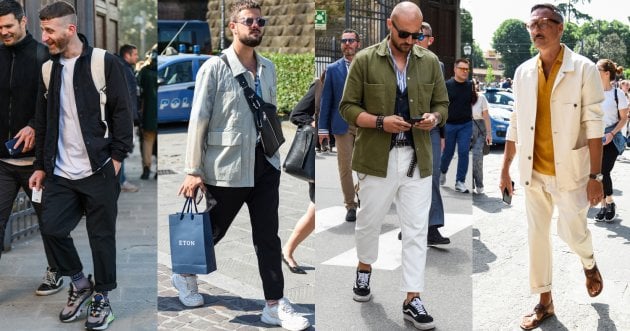
The “jacketed pants” are the most versatile and flexible of all dress fashions. As an indispensable standard for men to wear both on and off the job, a wide range of styles have been proposed, and the impression can vary greatly depending on how they are coordinated. In this issue, we will focus on the jacket style and introduce some noteworthy dressing theories and key points through snapshots of international outfits.
CONTENTS
- What is the jacket style?
- Tailored jackets ensure a dressy impression, while pants add character.
- Dressing Point (1): "Create a distinctive color pattern and texture on the top and bottom to create an intricate look.
- Dressing Point 2: "Differentiate with the silhouette of the bottoms.
- Dressing Point (3): "Refresh the impression of jacket pants by adding outerwear.
- Take a quick look at international street snapshots of jackets! Find your ideal men's coordination!
- Recommended 3 Tailored Jackets
- Three recommended slacks
Suponsered by
What is the jacket style?
To begin with, the jacket style is a combination of a tailored jacket (blazer) and pants, which is proposed as a stand-alone item, not as a suit (set-up). It has a wide range of options for bottoms, including jeans, chinos, work pants, as well as dress pants including slacks, and can express a more casual and individualistic style of dressing than the suit style. Incidentally, ‘jacket pants’ is a name unique to Japan. Overseas, it is called ‘suit separates combinations.
The royal road to the jacket style is a navy jacket and gray slacks!
The jacket style with a neat navy blazer and gray slacks, which evokes an image of refinement, intelligence, and trustworthiness, has a conservative image appropriate for the business scene, yet has both sophistication and a casual feel, and has been considered the royal roadmap of classic smart-casual wear. It is said that this style originated in the early 1800s, when blazers were used for fraternities and sororities at schools in England such as Cambridge and Oxford. After black, the most formal color in the context of dress, the jacket style in navy and gray can be worn for a wide range of occasions. Even today, the combination of a navy blazer and gray flannel pants is used for uniforms in many schools.
And in the 1930s, Brooks Brothers introduced the navy blazer and suggested combining it with dark wool trousers as a styling option. Tied up, it established the status of a casual attire that could be worn in business situations or semi-formal occasions, and an American traditional style that was less formal than the suit.
The main reason why the jackets with navy jackets and gray slacks are called the royal road is that this combination always brings a fearless and intelligent impression regardless of age or skin color, while working beautifully with each other, creating a sense of cleanliness and raising the level of stylishness. Furthermore, navy blue and gray are the most important colors for men’s fashion to form the basis of a tailored wardrobe, and the fact that navy suits and gray suits are already widely recognized in the business scene as absolute staples common to all countries solidifies the royal road image. The author believes that this is also a factor that has strengthened the image of the royal road.
Tailored jackets ensure a dressy impression, while pants add character.
The dressy atmosphere that is at the heart of the jacket style and its most prominent characteristic is created by the tailored jacket, which is the main feature of the jacket. While it is of course fine to play with the design of the jacket, the choice of bottoms is far wider than that of the jacket, so it is effective to distinguish oneself from others by using the choice of pants.
Dressing Point (1): “Create a distinctive color pattern and texture on the top and bottom to create an intricate look.
The jacket style is popular these days, with one-tone, tone-on-tone, and tonal colors, but to express a stylish, crisp look, it is a good idea to vary the colors, patterns, and textures on the top and bottom. In addition, to create a clear styling outline, limit the number of colors in the coordinating items to about three. With these two points in mind, even beginners in jacket coordination should be able to create a highly sophisticated and clean styling impression.
Dressing Point 2: “Differentiate with the silhouette of the bottoms.
If you are aiming for a clean look, wear ankle-length slim tapered slacks. If you want to differentiate yourself with a modern, dynamic silhouette, wear full-length wide pants and baggy denim with a cushion at the feet. Of course, tailored jackets can also be differentiated by their color, pattern, and material, but as mentioned above, pants offer a wide range of style options, and pants that give a very different impression depending on the silhouette, length, and material are more proactive in differentiating themselves and are ideal for expressing individuality.
Dressing Point (3): “Refresh the impression of jacket pants by adding outerwear.
To freshen up the look of jacket shorts, an outer layer over the jacket is an option. In the fall, the height of winter, or early spring when the weather is still cold, it is interesting to express a casual look and mix styles by adding an overcoat that goes well with a tailored jacket, or an outdoorsy outerwear that protects against the cold.
Take a quick look at international street snapshots of jackets! Find your ideal men’s coordination!
If you want to see more men’s jackets, check out the “OTOKOMAE Snap Page”!
The snapshots we picked up this time are now available on the OTOKOMAE Snap Page. By using the hashtag function, you can check all the snaps focusing on a single item at once. If you register as a member, you can save your favorite snaps and articles.
Check out the OTOKOMAE snap page for jacket coordination
Finally, the OTOKOMAE editorial department introduces ” Tailored Jackets & Slacks ” that we recommend to our readers, based on information obtained from interviews at hot brand exhibitions and leading select stores, and from fixed-point observations in major fashion cities!
2/2GO TO NEXT PAGE
























![Jacket Men’s Dressing Technique [ Summary of the means of dressing up ].](https://otokomaeken.com/wp-content/uploads/2015/10/33a658a16de5b4342ed2203e4bfa7657-630x331.jpg)

















